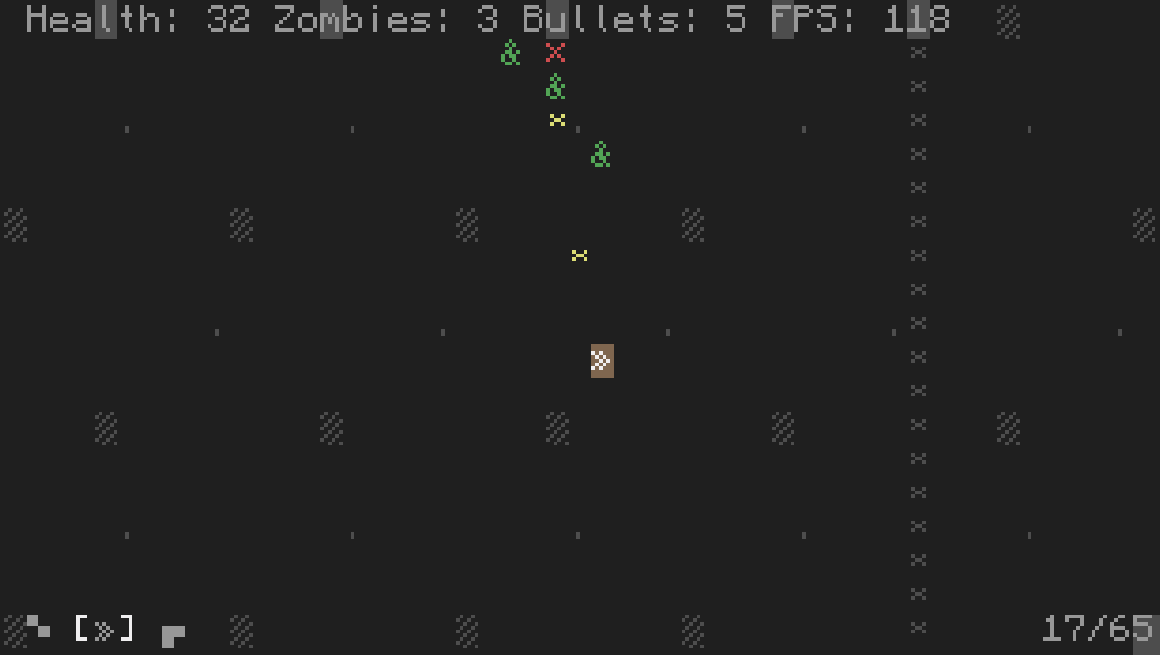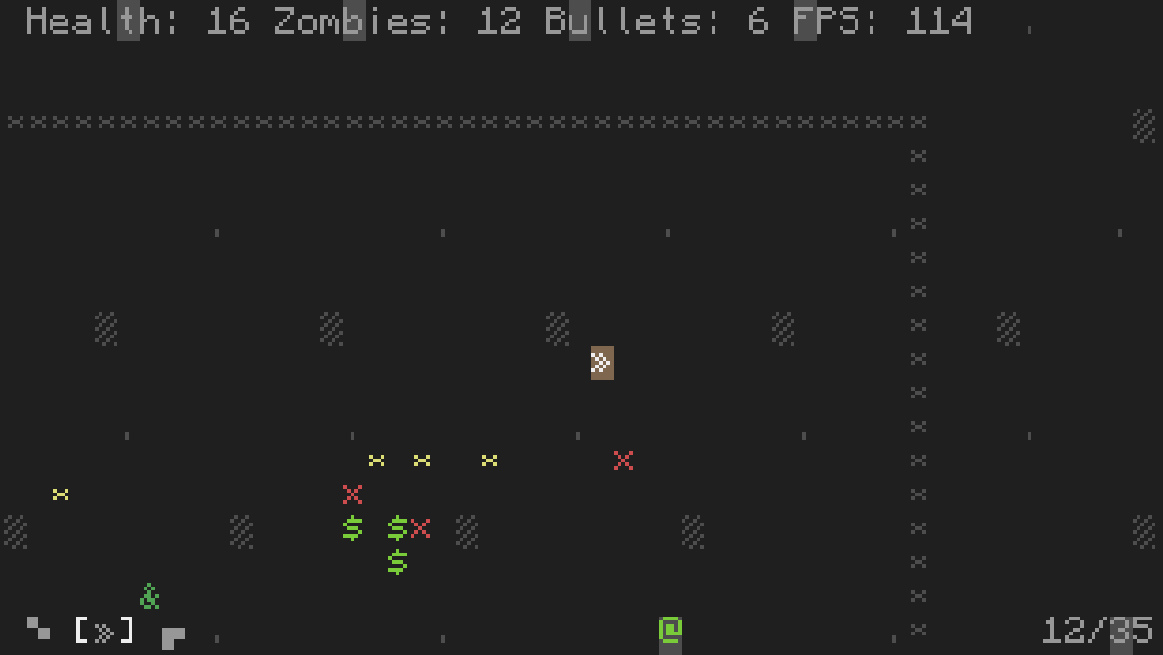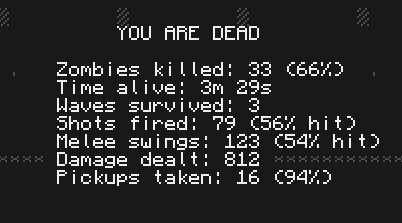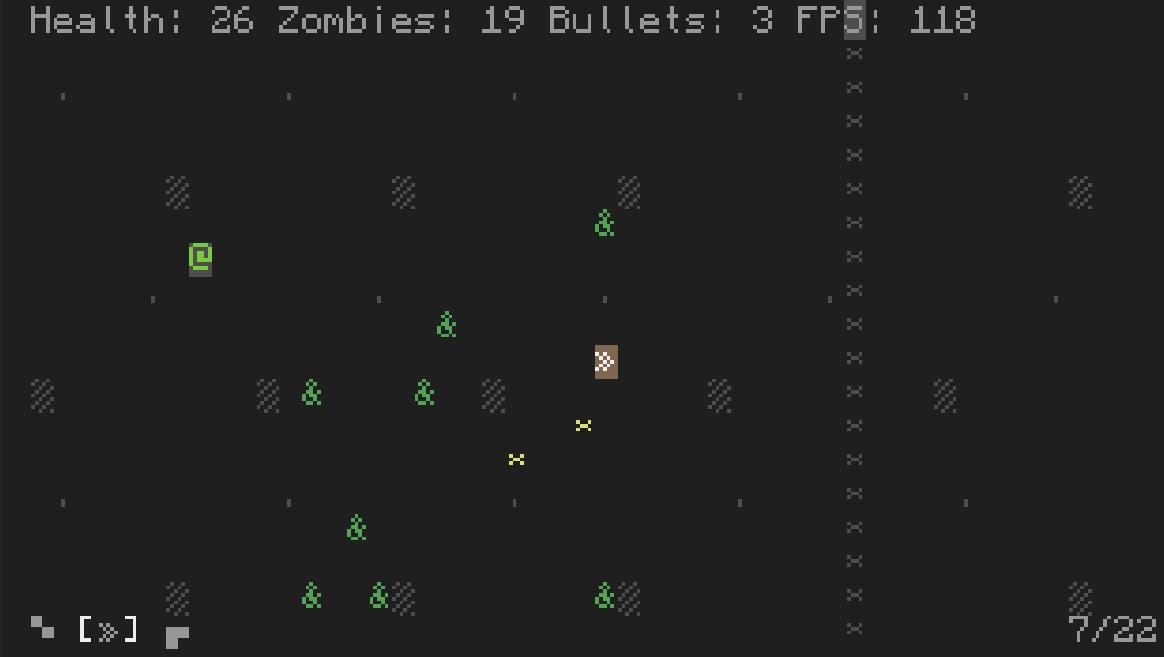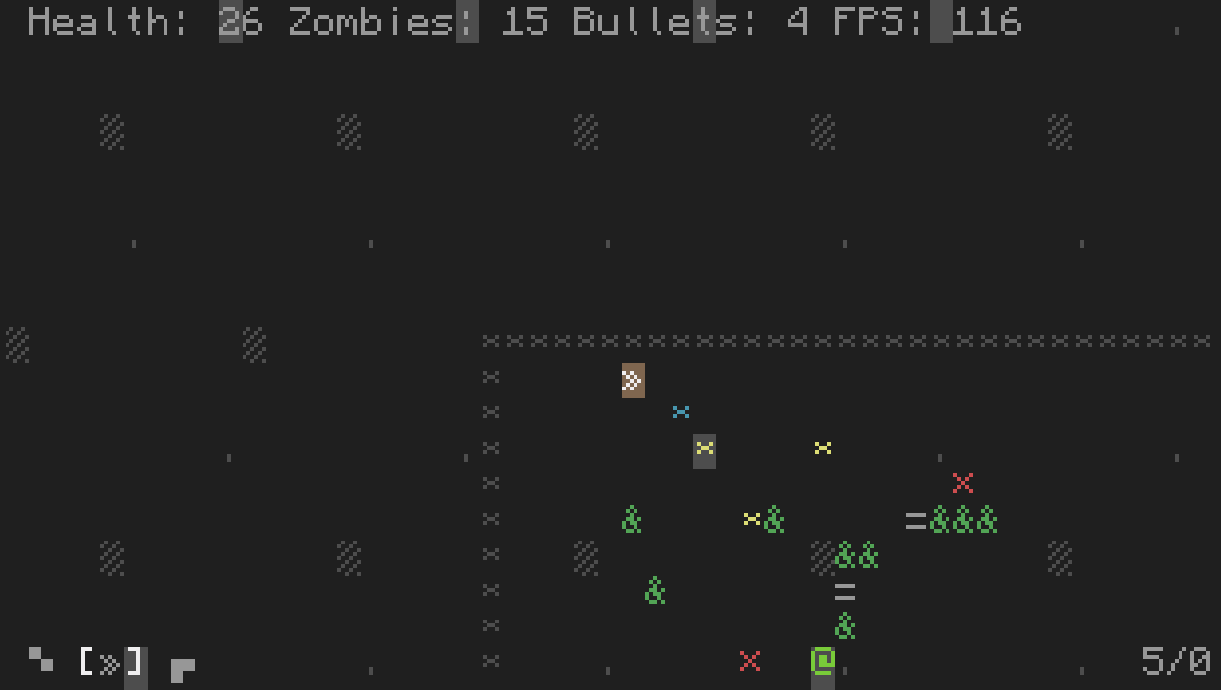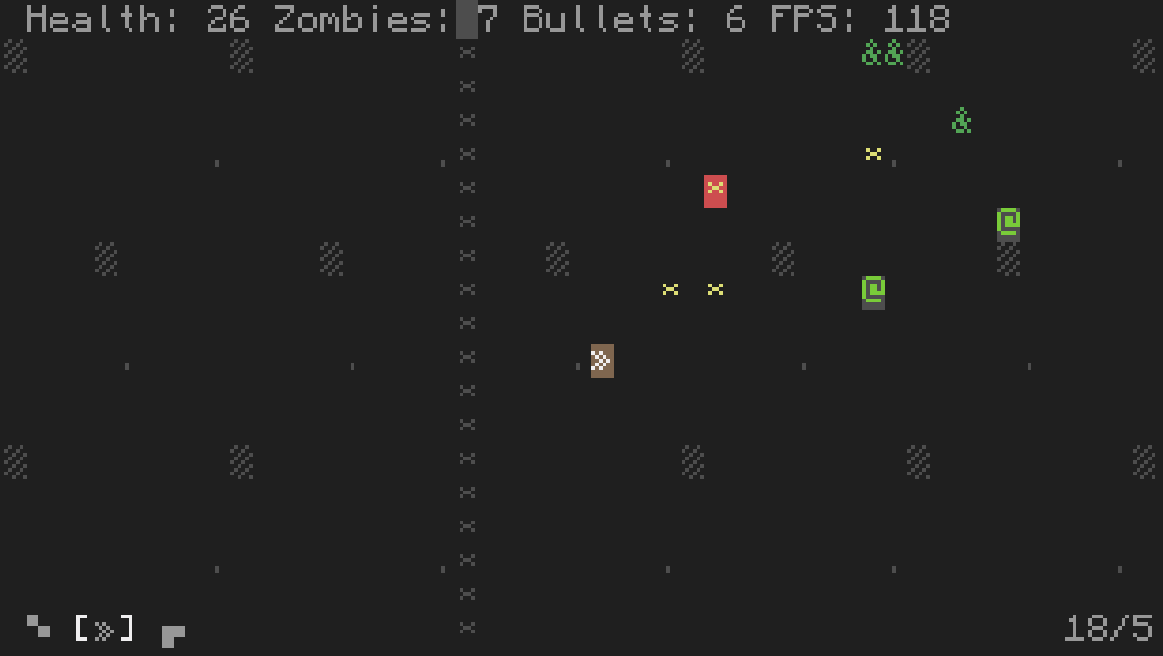Posted 19 December 2016 - 03:27 PM

A Christmas Horror
Hello, glorious people of ComputerCraft!
For months I've been silent, but now comes a day which I'm sure all of you have anticipated greatly: today, I'm releasing an open beta of Zombease, a top-down zombie survival shooter for your favourite Minecraft mod. Merry Christmas!
Controls
WASD to walk around, click/hold/drag to shoot or punch in that direction. Zombies occasionally drop items, so go ahead and pick them up, before they perish! White ones are weapons, light grey items are ammo. Press 1 to 9 (on the top row, not the num pad) or use your mouse wheel to select a weapon (you will at first only have your fists). Press R to reload a gun. Should you get bored, Q quits the game in any situation.
In the Armoury, you can select a different weapon by scrolling, and drag the model around with your mouse.
A Word of Warning
This is beta. That means it's pretty stable, probably kinda usable and maybe a bit fun, but definitely not perfect. There's a lot more to come for Zombease, and you will run into bugs. So please report them! Whether here, through PM, on Gitter, on GitHub, doesn't matter. Just do!
Also, you'll notice that you can go outside of the world borders (bordered by asterisks). While this might save your life, it isn't recommended: no bullets spawn in "the void", so attacks will have no effect. Shooting will still consume ammo, however.
Installation
Luckily, installing Zombease is as simple as running
pastebin run SNnkfxnx
Note that you will need an advanced computer and ComputerCraft version 1.76 or later to run the game properly. The UI should scale up rather well, but the opposite will not be true.
To launch the game, run menu.lua
Updating
To update Zombease, simply run pastebin run snnkFXNX again. An installation/update will not overwrite existing saves (if the game crashes, try a full reinstall, however), nor settings, nor any other files.
Screenshots
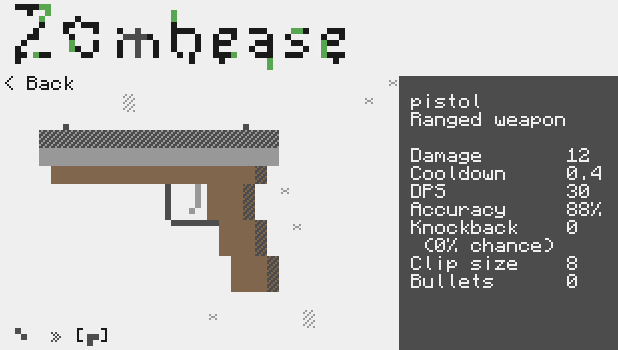
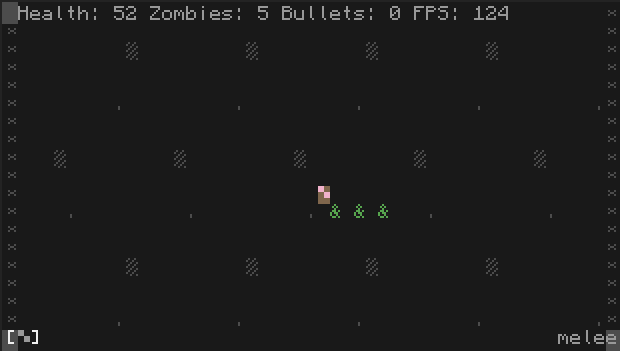
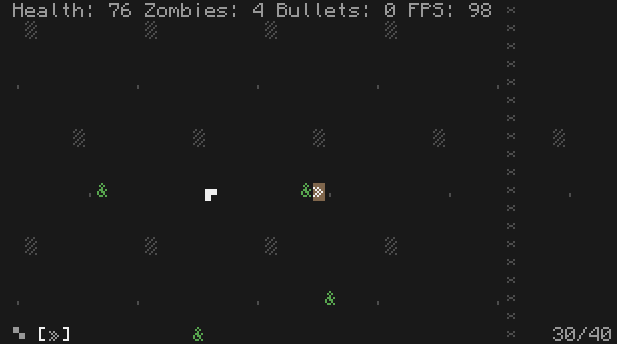
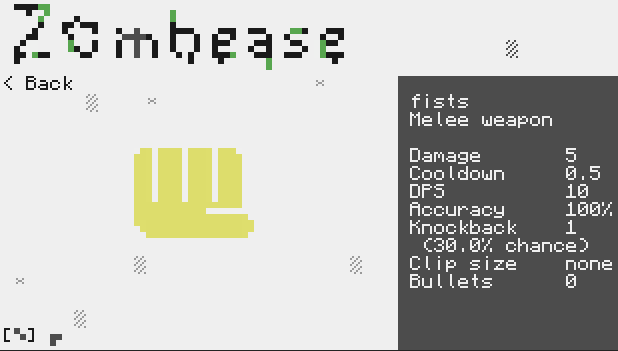
Enemies
Currently, there are four types of zombies. First there is the generic kind, the and symbols (&). They're just regular infected people with average speed, damage, and health. The second kind are runners (dollar signs $). They once were able athletes and now try to outrun each other in the race for your blood. With the third wave, you'll be introduced to the heavy-duties, the men of steel who lived the lives of police officers and soldiers. Their skull-shattering damage and (almost-)impenetrable armour are balanced by slow speed. There is also one more zombie type, which you'll meet in wave #5 and beyond. I don't want to spoil its abilities, but good luck fighting that one!
Hint: Runners ($) are the only kind which drops health packs.
Roadmap
The number one on the to-do list is the implementation of a GUI for weapon attachments. Their functionality (and some models) are technically already implemented in the game. Next up is geometry, levels, and generally more content. You might have noticed a contrast between the dark theme of the arena and the snow storm of the main menu. This isn't accidental, as players will be able to fight in various different environments. If you have ideas on what you'd like to see in the game, please share! I'm always looking for ways to improve this project.
Performance issues
UPDATE: Zombease 0.1.2-beta added an option to limit the FPS to the precision of the system clock (20 FPS on vanilla-like platforms), which is enabled by default. This seems to fix CCEmuX performance issues and improves responsiveness of other platforms as well.
Yes, Zombease is quite heavy on your platform. This is why I recommend using CCEmuRedux (Lignumm's CCEmuX unfortunately has performance issues itself at the time of writing) instead of the vanilla game, for the best experience. Zombease won't display correctly on CCLite, as it requires the new character set support.
Credits
Thanks to [member='Bomb Bloke'] for his BLittle API and [member='nitrogenfingers'] for Micropaint! The installer is powered by [member='apemanzilla']'s flawless gitget.
Many people shared ideas and improvements to the game before the beta release, namely CrazedProgrammer, [member='SquidDev'], demhydraz, daelvn, InternetUnexplorer, Lignumm, [member='Exerro'], and [member='apemanzilla'] (if I forgot any of you guys, I'm very sorry! Please contact me to correct that). They have all been a great deal of help, and made me look at the design from a different perspective. For their never-dying support, I promised to make an easter egg for each one of them. The easter eggs aren't present in this beta, but will definitely come in a later release!
Last but not least, many thanks to [member='Oddstr13'] for his cc-require. A standards-compatible package and require should be in CC by default!
Edited on 21 December 2016 - 07:36 PM

